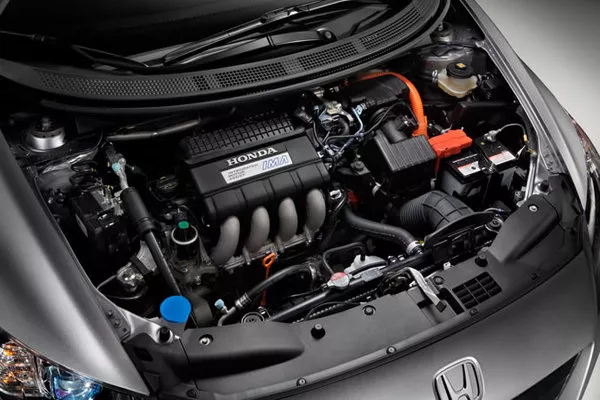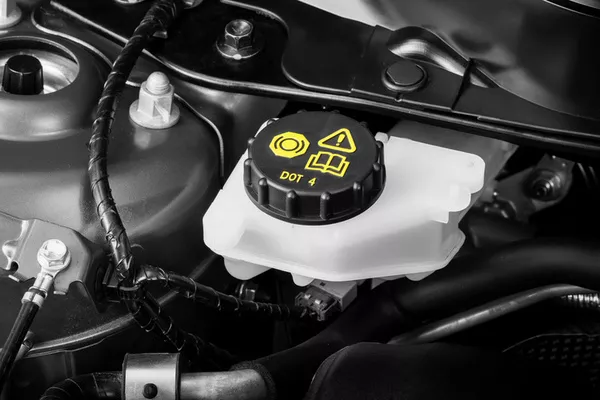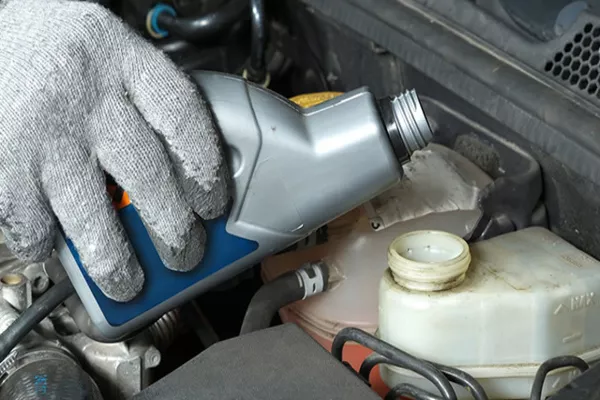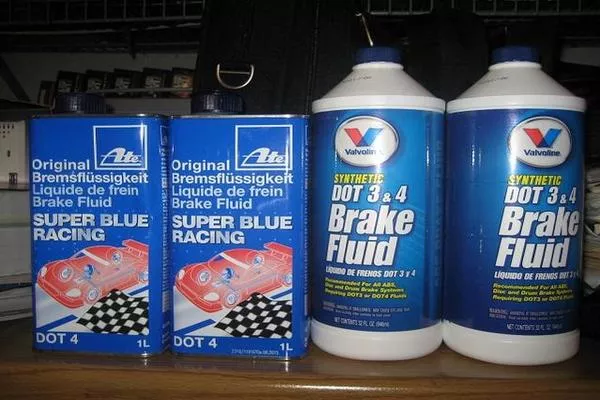We all want our four-wheeled vehicles to be always in tip-top shape. This doesn’t only make our vehicles appear dashing but keeps it running in a good performance as well. Keeping the vehicle in a good running condition is a vital part if you want to be safe and stay safe while driving on the dangerous streets and highways.
Taking care of your car is more than just cleaning the exterior paint, windows, and mirrors. The parts that are most responsible for the vehicle’s performance is under the hood. This is all where all that mechanical magic happens the moment you start the engine. There are hundreds of little bolts and pieces that come together with the sole purpose of taking you where you want to go.

The parts that are most responsible for the vehicle’s performance is under the hood
One of the important elements that keep your car running is the brake fluid. It ties pretty close to the engine when it comes to importance because what’s more important than getting a car to go is to get it to stop. So we know it’s important and we know where it goes in the car, but what is brake fluid really? What does it do to keep us from accidents?
We have gathered all the information you would need to know about brake fluid. Starting from what it is to how it helps your car. So next time you go on either a long drive or just a quick one, you’ll know how important it is to check on your brake fluid before leaving home.
1. What is Brake Fluid?
Brake fluid is solely made for what its name already implies. It also goes by other names such as hydraulic fluid. It is the liquid that lies between the brake lines and is usually glycol-ether based. There are also brands that carry brake fluid based on mineral oil as well as silicone.

Brake fluid or hydraulic fluid is the fluid that lies between the brake lines
Brake fluid isn’t only seen in four-wheeled vehicles such as cars. They are also used in motorcycles, other forms of automobiles, bicycles and even light trucks. It is used in hydraulic clutch applications and hydraulic brakes in all sorts of vehicles.
>>> Learn about 4 other essential fluids for your vehicle
2. How Does Brake Fluid Stop A Car?
Brake fluid is in a liquid state, therefore, it is a non-compressible substance. When you push your foot on to the brake pedal, the brake fluid that lies between the brake lines is pushed to go to four different directions. These four different directions are the four corners of your vehicle where the wheels are attached. This force is applied indirectly to the brake rotors of your vehicle.
When you push your foot on to the brake pedal, the brake fluid that lies between the brake lines is pushed to go to four different directions and that directions is the four wheels of your car.

Brake fluid is in a liquid state, therefore, it is a non-compressible substance
This simple process is what applies the pressure on the wheels whenever you step on the brakes. With this coordinating mechanism, stopping, and slowing down your car is possible and is even easier than what we had back in the less modern ages.
If that explanation was still a bit vague in defining the process, take a look at this step-by-step process on how brake fluid works. It explains how brake fluid reacts in the vehicle’s hydraulic brake system.
First, the driver activates the brakes by stepping on it or any form of depression. This then ignites the pedal to squeeze the piston located inside the engine’s brake calipers. The squeezing action from the 2nd step forces the pressure inside the brake lines to increase. This activates the brake fluid and is sent to do its purpose.
Brake fluid is a compact substance and has some pressure to it. This pressure is what causes the rotors to press down on your vehicle’s brake pads. This results to the brake pads making contact with the wheels and you can pretty much expect what happens next. This results to the effects that we were trying to achieve; to slow down and eventually stop the rotation of each of the wheels of the vehicle.
3. How Often Should You Change Your Vehicle’s Brake Fluid?
Like everything else that’s consumable, brake fluid is something that you need to eventually spend on. It's best to keep the brake fluid in check as this can accumulate moisture over time. When this happens, the quality of the brake fluid will lessen over time until it finally loses its purpose. This can result in further damages within the vehicle and can even result in mechanical failures that may lead to accidents.
>>> Related: Never ignore these 3 common symptoms of low brake fluid

Expert mechanics suggest to change your brake fluid once a year
This is why it is extremely vital to any type of vehicle that the brake fluid should be drained after a certain period of time. The brake fluid container shouldn’t be left empty if you wish to run the car though; the brake fluid should be replaced with a new one to ensure smooth and effective brake function.
In most cases, expert mechanics would suggest that you change your brake fluid after every year or maybe two years as the longest. This can vary though, depending on your car model, car brand and how you use your vehicle; in fact, every vehicle has different maintenance needs depending on the three factors stated.
Though there is no exact time span that indicates how often you should change your vehicle’s brake fluid, you shouldn’t hesitate to call professional help immediately once you notice something is wrong with your ride. Regular and proper car maintenance is of utmost importance to prolong the lifespan of your vehicle.
4. Types & price of Brake Fluid
This may be surprising for those vehicle-owners who just ride-and-go and don’t really fiddle much with their car. There are actually two main types of brake fluid available; the first one is glycol-based and the second one is silicon-based. The first type mentioned is the brake fluids that are most preferred for vehicles with ABS or anti-lock brake systems.
Under this are more brake fluids that are classified by the Department of Transportation. The latter on the other hand only works in vehicles without the ABS mechanism.
Brake fluid price in the Philippines vary depending on brands. According to Lazada PH and some other e-commerce websites, price of a 1L bottle of brake fuide ranges from as low as Php 500 all the way up to roughly Php 2,000.

Different types of brake fluid
It is fairly important that a vehicle with no ABS technology should never have a glycol-based brake fluid. If it does then it is impossible to have it work with a silicone-based brake fluid again. The small components left by glycol-based brake fluid will compromise the silicone-based brake fluid.
So now you know everything that a vehicle owner should be aware of when it comes to brake fluids brought to you by Philkotse.com. Since you’re now also aware of its importance, don’t forget to check on your vehicle’s brake fluid every once in a while to ensure a smooth and safe driving experience.
Recent posts
- How to use your car brakes properly Nov 07, 2018
- These 7 habits of car owners are awfully damaging their brakes Mar 17, 2021
- How to make your brakes last longer? Feb 17, 2021












